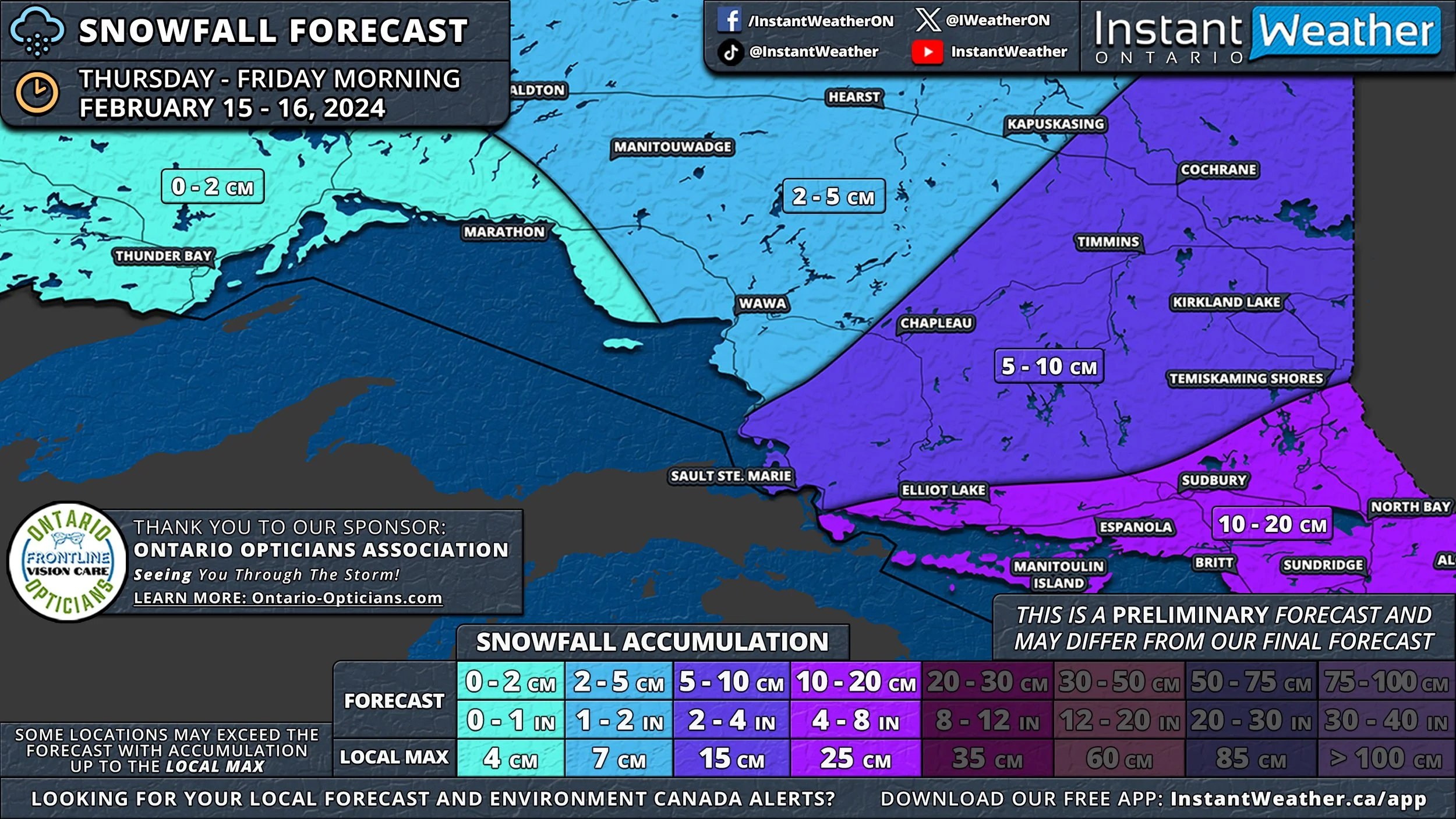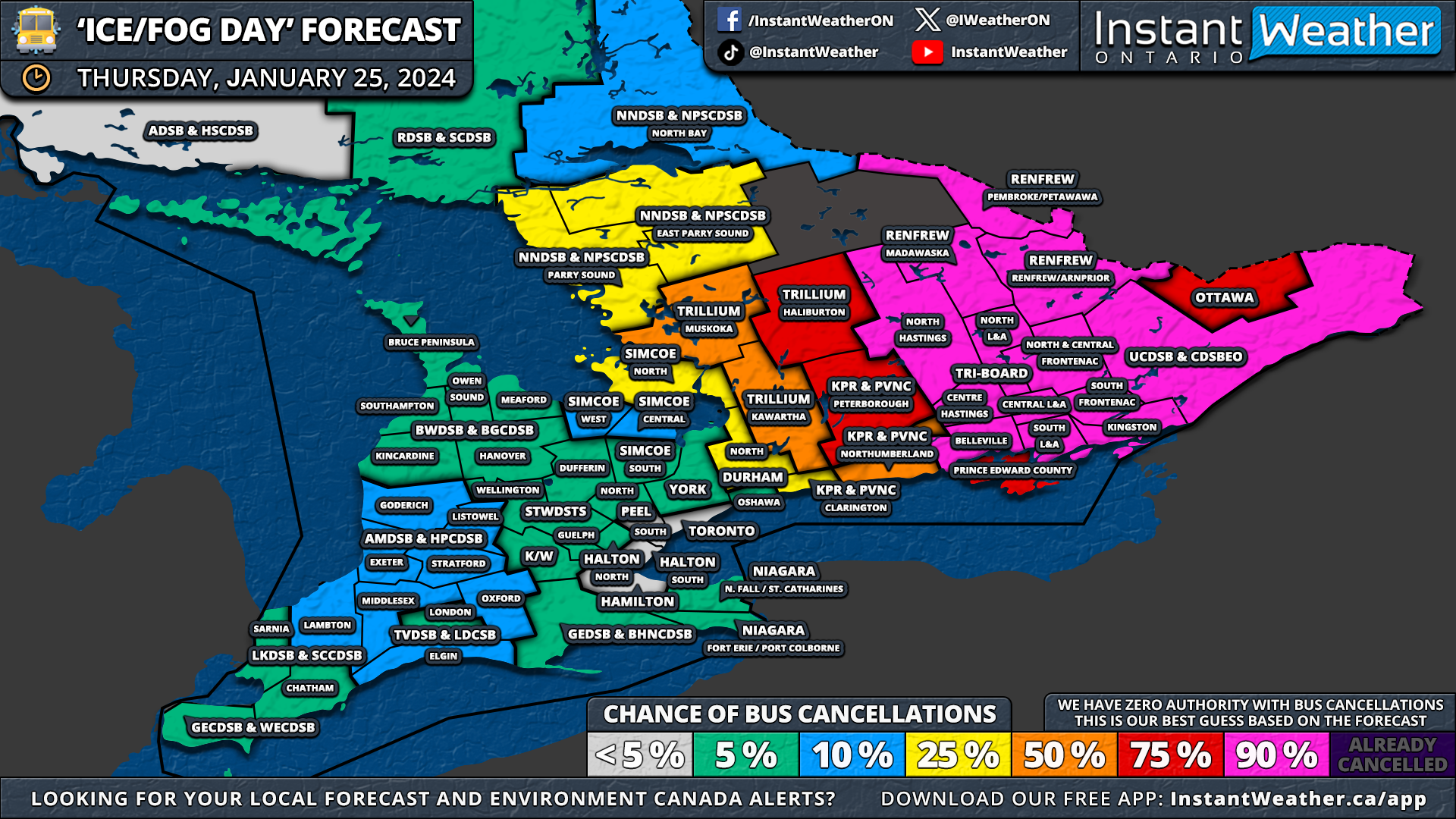Weather Whiplash in Ontario With Record-Breaking Heat, Severe Thunderstorm Risk & Flash Freeze This Week
/Get ready for a wild weather ride, Ontario! The old saying will hold true this week: "If you don't like the weather in Ontario, just wait five minutes—it'll change!" And change it will, with a full spectrum of seasons unfurling over the next 48 hours.
As we previously hinted, a ‘heatwave’ is set to roll in for Tuesday and Wednesday, with temperatures climbing into the teens. Parts of Deep Southwestern Ontario are even teasing the 20°C mark, according to some models!
Thunderstorms are on the agenda for Tuesday, starting with morning storms and a potential severe risk by the afternoon and evening.
Fog, a recurring theme this season, is slated to make a comeback in certain areas on Tuesday and Wednesday. This will be accompanied by heavy rain, dumping 15-30mm by Wednesday morning. For parts of Northern Ontario, we could be looking at significant snowfall totals as the cold air hangs on there. This includes Kenora, Dryden, Kapuskasing, Cochrane and Timmins.
Take a look at Windsor's 10-day forecast—it's a real temperature roller coaster. We're climbing to the first high on Wednesday with temperatures soaring over 15°C, then taking a dive back to near seasonal norms by Thursday.
But hold on tight! We're heading back up for another warm spell this weekend, with the mercury potentially flirting with the 20°C mark by Monday.
For some perspective, the average high for Windsor at this time of year hovers around 3°C. However, the upcoming forecast anticipates highs that will consistently top the seasonal average. And this pattern of temperature swings? It's set to stick around into the early days of March.
Download our free app to view your local forecast.
But don't pack away your winter gear just yet!
Remember, it's still February, despite what the balmy temperatures might suggest. Winter is gearing up for a comeback by Wednesday morning and afternoon. A sharp cold front will sweep through the province, one of the steepest we've seen in quite some time, with temperatures plummeting from the teens to below freezing in just a few hours.
Given the expected rain and mixed precipitation during this cooldown, we're likely to see road conditions turn treacherous with ice on Wednesday. A tricky commute is on the cards for Wednesday afternoon, and we can't dismiss the potential for school bus cancellations if the flash freeze risk materializes as the models predict.
From late Wednesday into Thursday, snow squalls are expected to revisit the usual snowbelt regions, with wind chills plunging to near -20°C—a stark contrast to Tuesday's near-record warmth.
And the temperature roller coaster doesn't stop there. As we look towards the weekend and into early next week, another significant warm-up is on the horizon. Because these rapid temperature fluctuations are definitely healthy for our ecosystem! 🫠
We're putting together a detailed forecast, complete with several maps to navigate this complex weather pattern. It's a bit of a task, so bear with us as we compile all the necessary information. Stay tuned!












































